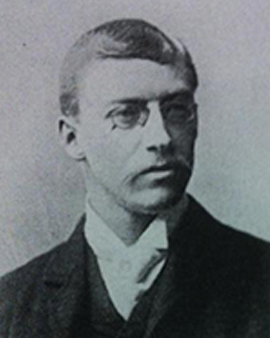In the freezing cold of a January morning in 1839, Willem Koekkoek was born into a world dominated by paints, canvases and brushes. As the second son of the famous Dutch Koekkoek family of artists in Amsterdam, his destiny was already preordained - he was to become an artist. His father, Hermanus Koekkoek, a renowned marine painter, taught Willem the art of painting at an early age. But while learning the techniques of brushstrokes and color mixing, Willem developed another passion - architecture. The precise lines and shapes of the buildings that graced his hometown fascinated him.
These two passions - painting and architecture - intersected in Willem's work when he began painting cityscapes. He moved from Amsterdam to The Hague and finally to London, always looking for new inspiration for his paintings. His artwork captured the essence of the cities he visited, and his attention to architectural detail gave his paintings a special depth. In 1866, at the age of 27, Willem married Johanna Hermina. They became the parents of two sons, Hermanus Willem Koekkoek and Marinus Adrianus Koekkoek, both of whom followed in their father's footsteps and became painters. In the tradition of his family, Willem taught his sons the art of painting, and thus the artistic heritage of the Koekkoek family lived on. In the 1880s, Willem moved to Amstelveen, a small town near Amsterdam. Although he continued to paint for his English clients, he spent the rest of his life in the Netherlands. However, as time went on, his health began to fail and he painted less and less.
On January 29, 1895, just a few weeks after his 56th birthday, Willem Koekkoek died. His artistic legacy, however, outlived him. To this day, his cityscapes and seascapes are reminders of the talent of this remarkable painter and architectural enthusiast. Through his art, Willem Koekkoek is remembered as an important part of his family's rich artistic tradition.
×





.jpg)
.jpg)
.jpg)
.jpg)
.jpg)
.jpg)
.jpg)
.jpg)
_-_(MeisterDrucke-906716).jpg)
_-_(MeisterDrucke-906716).jpg)
.jpg)
.jpg)
.jpg)
.jpg)
.jpg)
.jpg)
.jpg)
.jpg)
.jpg)
.jpg)
.jpg)
.jpg)
.jpg)
.jpg)
 - (MeisterDrucke-89828).jpg)
 - (MeisterDrucke-89828).jpg)
.jpg)
.jpg)
.jpg)
.jpg)
.jpg)
.jpg)
.jpg)
.jpg)
.jpg)
.jpg)
_-_(MeisterDrucke-1315191).jpg)
_-_(MeisterDrucke-1315191).jpg)
.jpg)
.jpg)
.jpg)
.jpg)
.jpg)
.jpg)
_-_(MeisterDrucke-1114128).jpg)
_-_(MeisterDrucke-1114128).jpg)
.jpg)
.jpg)
.jpg)
.jpg)
.jpg)
.jpg)
.jpg)
.jpg)






